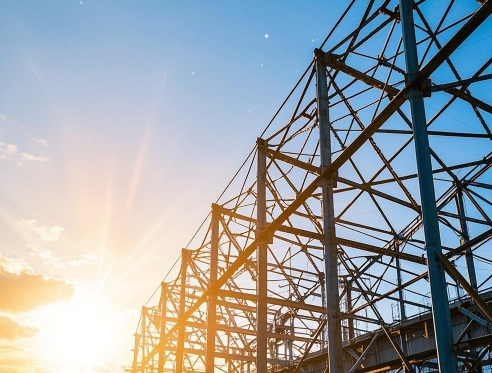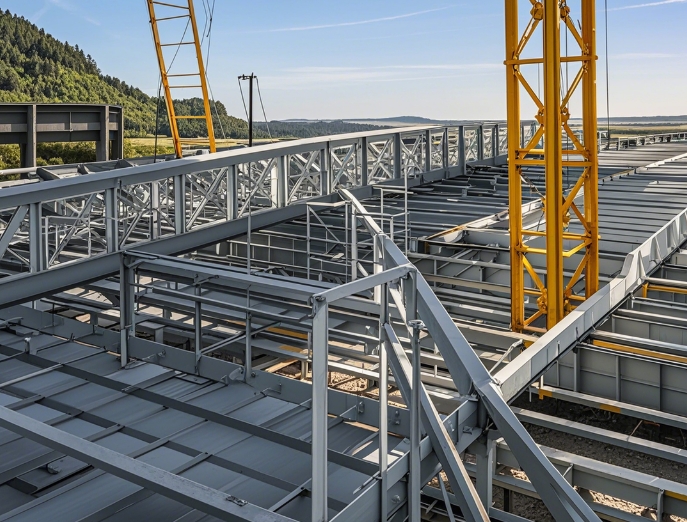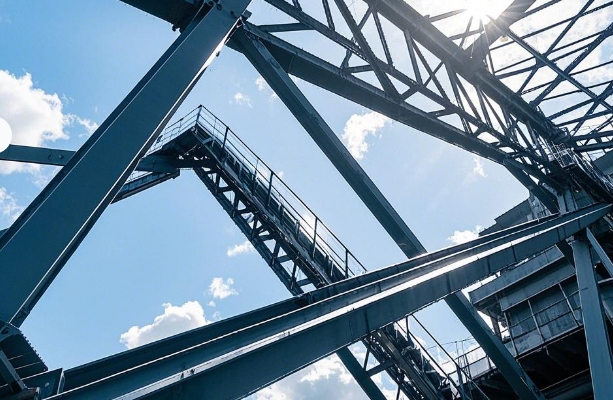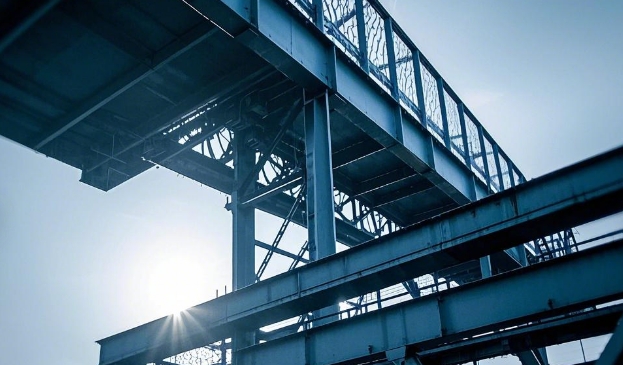How to conduct quality inspection after welding the steel structure of the grid?
更新时间:2025-01-26 12:46:52•点击:348435 • Entreprise's news
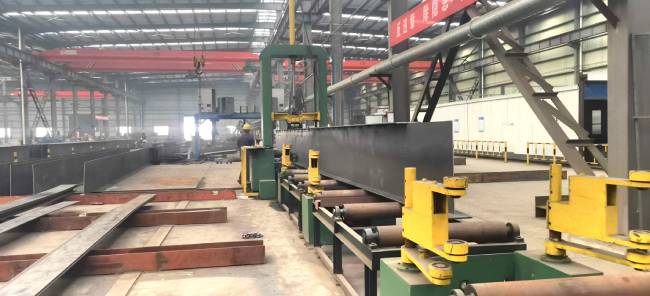
The quality inspection of the welded steel structure of the grid covers multiple aspects, mainly including appearance inspection, non-destructive testing, mechanical performance testing, etc. The following is a specific introduction:
Appearance inspectionSurface inspection of welds: Observe the surface of welds with the naked eye or with the help of a low-power magnifying glass to check for defects such as cracks, pores, slag inclusions, undercutting, lack of fusion, and weld beads. The depth of undercutting should generally not exceed 0.5mm, and there should be no serious defects such as cracks or lack of fusion on the surface of the weld.
Weld seam size measurement: Use tools such as weld inspection rulers to measure the width, height, excess height, misalignment and other dimensional parameters of the weld seam to ensure that it meets the design and specification requirements. For example, the excess height of the weld seam is generally between 0-3mm, and the misalignment should not exceed the specified value.
Corner weld inspection: Focus on inspecting the size and shape of the weld legs of the corner weld. The size of the weld legs should meet the design requirements, and the shape should be uniform and smooth, without any local unevenness or excessive undercutting.
Non destructive testing
Ultrasonic testing: Using the propagation characteristics of ultrasonic waves in metal materials, detect whether there are defects inside the weld, such as pores, slag inclusions, incomplete penetration, cracks, etc. This method has high sensitivity for detecting internal defects and can detect smaller defects, but its qualitative and localization accuracy for defects is relatively poor.
Radiographic testing: By penetrating the weld seam with X-rays or gamma rays, it is determined whether there are defects inside the weld seam based on the image on the film. Radiographic testing can intuitively display the shape, size, and position of defects, and has a good detection effect on volumetric defects such as pores and slag inclusions. However, its sensitivity to detecting surface defects such as cracks is relatively low, and the detection cost is high, which poses a certain radiation hazard to the human body.
Magnetic particle testing: suitable for detecting defects on the surface and near surface of ferromagnetic materials, such as cracks, hairlines, etc. By applying magnetic powder on the surface of the weld seam and utilizing the leakage magnetic field at the defect site to adsorb the magnetic powder, magnetic traces are formed to display the location and shape of the defect. This method has fast detection speed and easy operation, but can only detect ferromagnetic materials and is ineffective for non ferromagnetic materials.
Penetration testing: mainly used to detect defects on the surface opening of welds, such as surface cracks, pores, etc. Apply a penetrant containing colored dyes or fluorescent agents onto the surface of the weld seam to allow the penetrant to penetrate into the defect, then remove excess penetrant and apply a developer to allow the penetrant in the defect to adsorb onto the surface, forming visible traces to determine the location and shape of the defect.
Mechanical performance testing
Tensile test: A tensile specimen is taken from the weld or welded joint and tested on a tensile testing machine to determine the mechanical performance indicators such as tensile strength and yield strength of the welded joint, and to check whether it meets the design requirements. The tensile test results should comply with the values specified in relevant standards, such as the tensile strength not being lower than the lower limit of the base metal standard value.
Bending test: Cut the bending specimen and conduct the test on the bending testing machine to check the plasticity and bonding performance of the welded joint during bending, and determine whether there are defects such as cracks. The bending angle and bending center diameter of the bending test should meet the requirements of relevant standards, and there should be no defects such as cracks larger than the specified size on the bent surface of the test sample after the test.
Impact test: used to determine the toughness of welded joints under impact loads and evaluate their impact resistance performance. Conduct impact testing on the impact specimen at the specified test temperature and measure its impact absorption energy. The impact absorption energy should meet the design and specification requirements to ensure that the welded joint has sufficient impact resistance during use.
Other tests
Hardness testing: Use a hardness tester to test the hardness of the weld seam and heat affected zone, and check whether the hardness meets the design and specification requirements. High or low hardness values can affect the performance of welded joints, such as high hardness leading to increased brittleness, and low hardness leading to insufficient strength.
Metallographic analysis: By taking metallographic samples, preparing and observing the weld seam and heat affected zone, analyze their metallographic structure, check for abnormal structures such as overheating, overburning, and Weibull structure, and evaluate the influence of welding process on the microstructure and properties. The metallographic structure should comply with relevant standards and design requirements to ensure stable performance of the welded joint.
Recommended Reading
-
Full analysis of seismic design and maintenance of grid structure
2025-02-27 16:16:52•1259436 次
-
What are the key process points to follow in order to ensure the quality of grid processing?
2025-02-27 11:21:00•151833 次
-
What type of construction is the grid mainly suitable for?
2025-02-25 16:42:00•148462 次
-
Quality control requirements of grid manufacturers!
2025-02-25 16:02:44•283680 次
